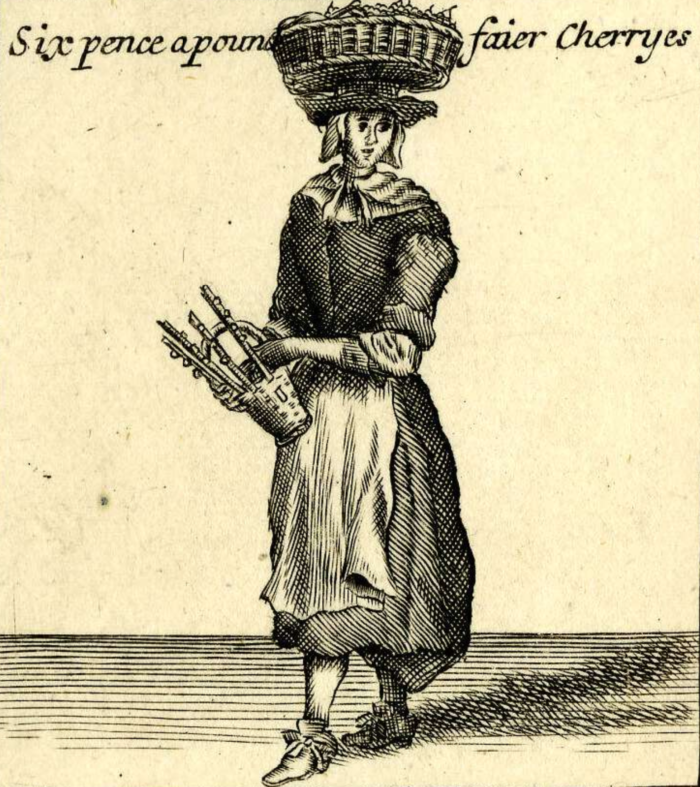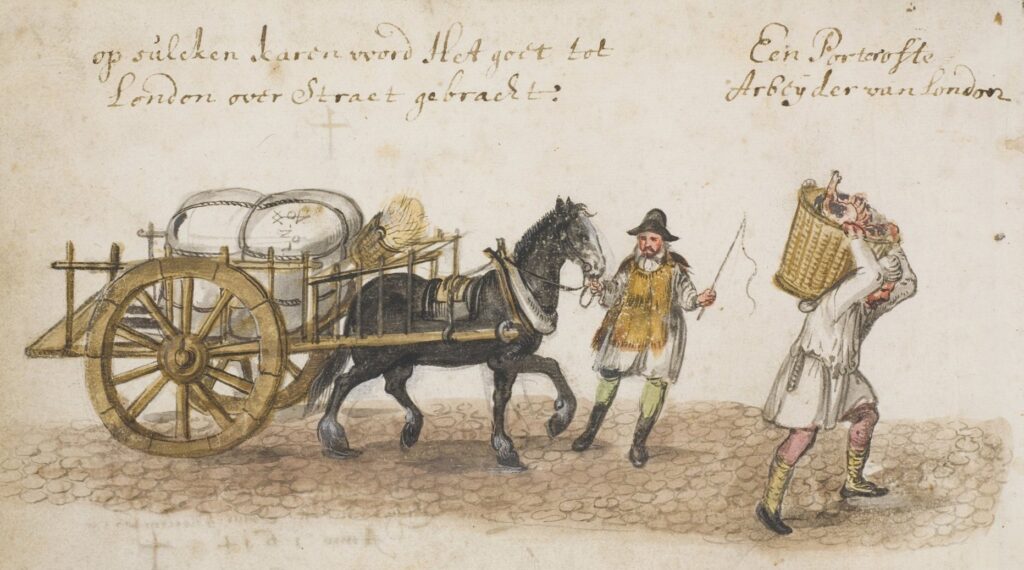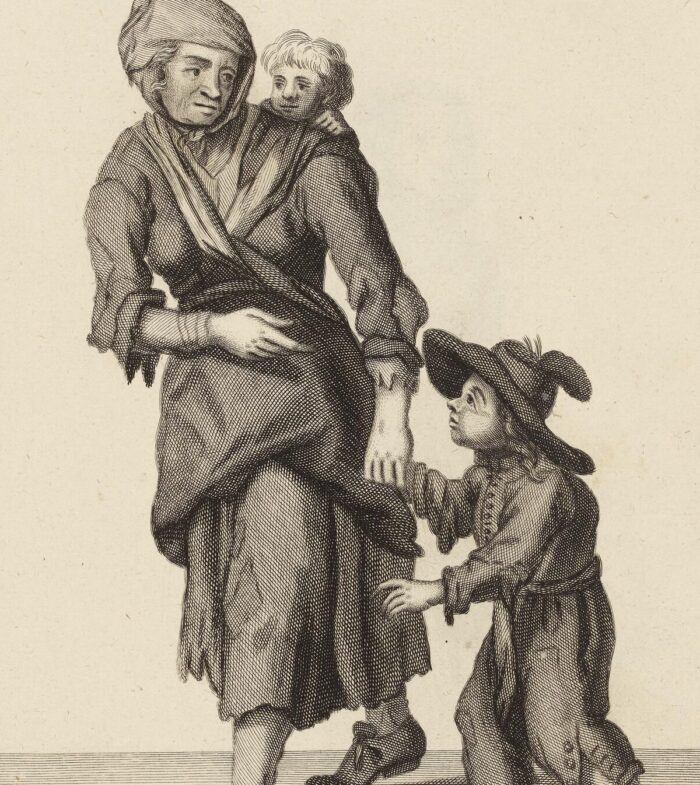Before the Great Fire, food markets had lined busy routes, causing congestion and leaving behind food and other waste to rot.
The need to rebuild the City was an opportunity to create new dedicated market places.
The need to rebuild the City was an opportunity to create new dedicated market places.

The City Corporation bought up land and paid for four new markets to be built in designated areas: Newgate, Honey Lane, Woolchurch and Leadenhall. It was a costly business as land had to be purchased from local householders.
Sir John Robertson was paid 5/- per foot at a total of £329. Skilled workers also had to be paid. Thomas Knight received £10,05, for digging and laying paving stones in Honey Lane. Edward Waldoe Esq. was given £18 for plumbers and carpenters’ work in the Piazza and John Moore Esq. charged £65 for lead for the market house.

'Cries of London', a cherry seller from a sheet of twelve figures of street trades and vendors, 1680-1700, © The Trustees of the British Museum.
Meat, fish, vegetables and other commodities were now sold together which allowed people to buy all their goods in one location. These purpose-built markets had better, more hygienic facilities, and new stalls included drainage, storage areas and refuge collection. They were owned by the market committee and leased to farmers and traders.
Women, as well as men, were allowed to be stallholders. Mary Hind, Anne Burgin, Judith Crozks and Margaret Holmes each had standings (stalls) in the Green Yard of Leadenhall for £8 annual rent where they sold fish bought wholesale from Billingsgate. Some stalls were a family business with daughters inheriting from their mothers and sons from fathers.



'The London Beggar' from the bound series of the Cries of London, 1688 © The Trustees of the British Museum.
As not everyone could afford to buy their own food, the City Churches provided some assistance. Vestry accounts show that churches arranged for bread to be distributed to the poor. There were also shelves in the porch where people could leave loaves for those in need. A remarkable example of these bread shelves survives in St Martin’s. They date from the late 1600s and were saved from St Mary Magdalen, in Old Fish Street, before it was demolished in 1893. Today, you will find them near the altar storing books and other items.
Read the stories of four that either survived or succumbed to the flames, and how they reemerged from the ruins.
Keep up to date with the latest news ...